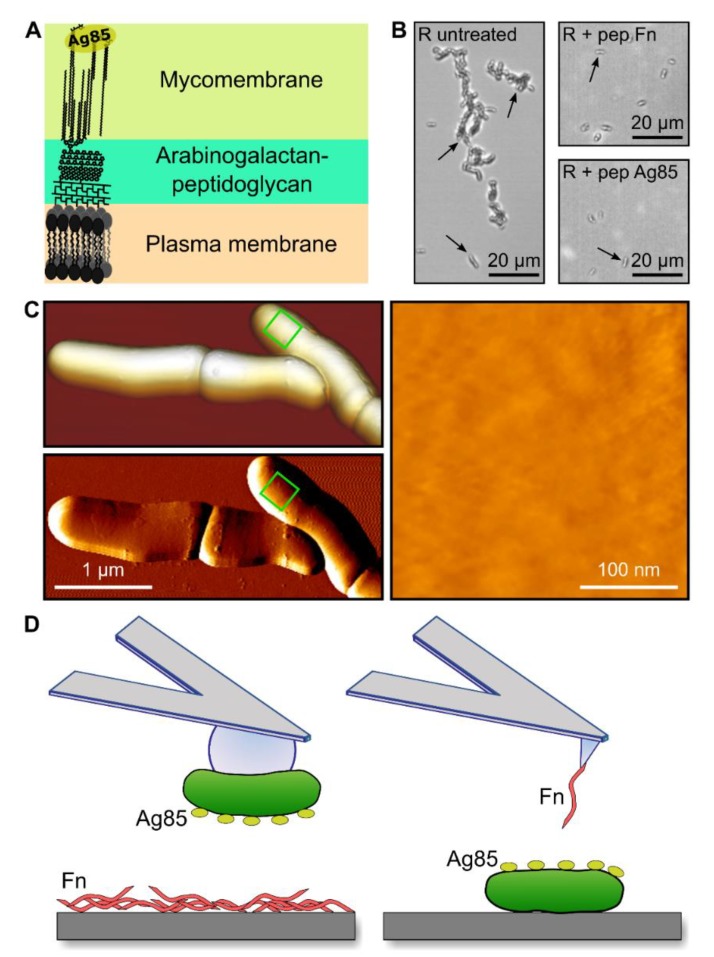Figure 1.
Mycomembrane-associated Ag85 is used by M. abscessus to bind Fn. (A) Secreted Ag85 is associated with the mycomembrane, which it helps produce via its mycolyltransferase activity and, where it is exposed on the bacterial surface to participate in adhesin-ligand interactions. (B) M. abscessus cells (pointed out by black arrows) attached to Fn-coated substrates (left panel), while bacterial attachment was inhibited by the addition of both Fnpep (top right panel) and Ag85pep (bottom right panel). At least 10 images for each condition from two independent experiments showed similar results. (C) Smooth surface topology observed for whole M. abscessus rough (R) variant cells by contact mode imaging (top left, 3D-projection of height data; bottom left, vertical deflection image) and 300 × 300 nm zoom 3rd degree-polynomial flattened height image (right panel) taken on top of one cell (green squares in the left panels indicate where the zoom was performed). Data representative of 29 images. (D) Cartoons depicting, on the left, the single-cell force spectroscopy and on the right, the single-molecule force spectroscopy approaches followed to study molecular force interactions between Ag85 and Fn.

